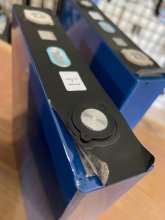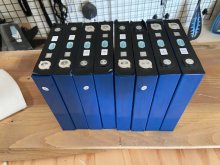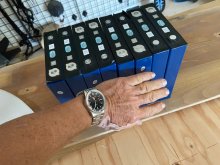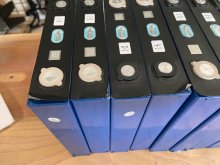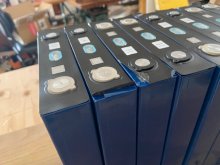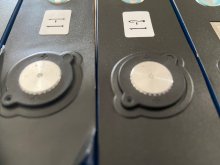Hello , I am new here, and just received 8 cells from Hunan AUK New Energy Co. They got to Florida quickly and according to the seller they are brand new design 163 AH calb cells. They are grade A cells. Checked the voltage , identical on all cells. But they did not come with screw holes, so I cannot connect them! They sent the 6 mm screws and bars and washers.
So I am arguing with them about this. They propose I solder terminals to them Then they proposed sending some predrilled terminals so I solder them. How in the heck can I solder these terminals and is this a normal thing?? The QR codes are there. The first comment they sent was that I can drill the holes. I asked how deep and then the manufacturer says they are concerned about drilling , that I should solder the terminals. I wonder if Will would be interested in testing these cells since they are brand new to market. I love the fact they are so tiny , as I plan to make a system for my sailboat. Any help or comments would be appreciated.
So I am arguing with them about this. They propose I solder terminals to them Then they proposed sending some predrilled terminals so I solder them. How in the heck can I solder these terminals and is this a normal thing?? The QR codes are there. The first comment they sent was that I can drill the holes. I asked how deep and then the manufacturer says they are concerned about drilling , that I should solder the terminals. I wonder if Will would be interested in testing these cells since they are brand new to market. I love the fact they are so tiny , as I plan to make a system for my sailboat. Any help or comments would be appreciated.



